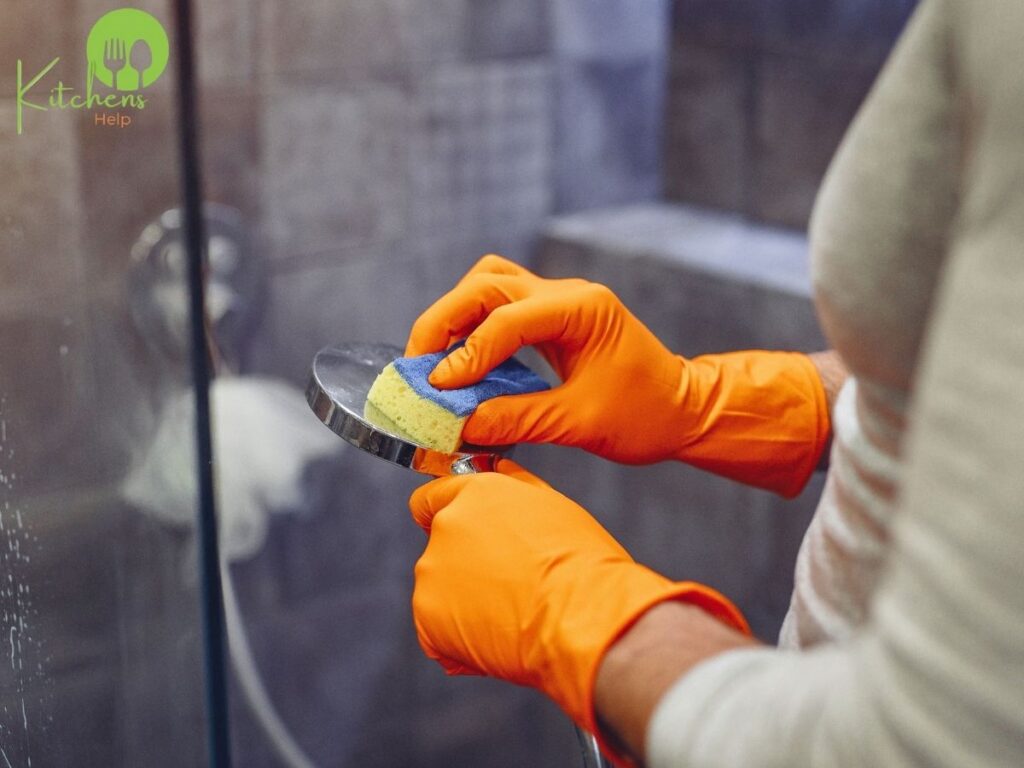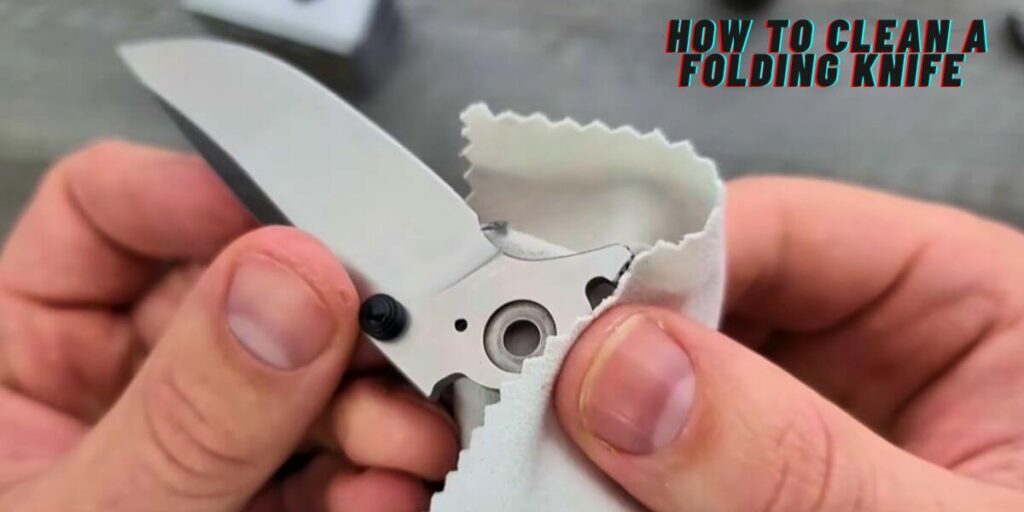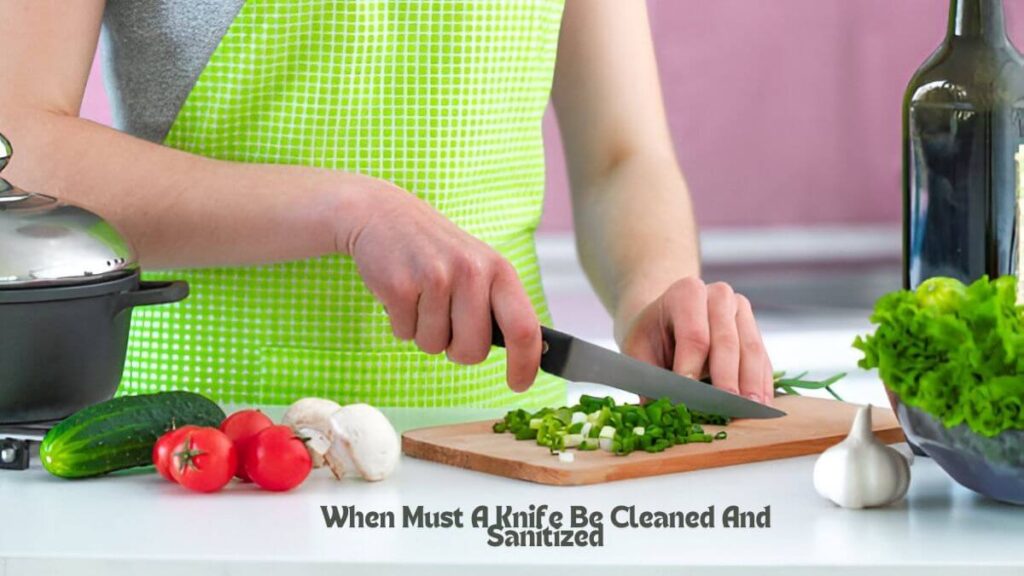5 Tricks | How to Clean Shower Head Without Vinegar
Table of Contents
ToggleA clean shower head is essential for hygiene and optimal water flow. Shower heads can get clogged up with hard water deposits that would lower water pressure from the shower head and provide a breeding ground for bacteria, leading to foul odors and undermining your health. Consistent cleaning is a crucial factor in keeping your fixture long-lasting and well-performing.

Homeowners with a green side can follow some accessible showerhead maintenance alternatives without using vinegar. Scrubbing with a toothbrush or soaking the fixture in naturally occurring solutions will remove buildup.
This practice will take your shower time to another level while ensuring hygiene and saving water. This trick also helps your health and the environment.
This is why learning to clean it well—especially without vinegar—is a productive use of your time. This guide provides all the tips and tricks you need to stay on top of shower head maintenance.
Why Does the Shower Head Need Cleaning?
Understanding Hard Water Build-Up Issues
Hard water is infamous for forming tough deposits of minerals, like calcium and lime, on faucets, shower heads, and even in pipes. Over time, these deposits build up, leading to low water pressure and uneven sprays that can be annoying when showering.
Awareness of these issues is the first line of defense in good shower head management, as this helps the homeowner to know how best to handle a problem if any arises.
Sprays, scrubs, and soaks to combat the sneaky mineral build-up mean that you’ll see a lot of DIY maintenance for shower heads focused on how to manage these annoying mineral deposits,
some swearing by soaking in vinegar or special cleaner designed to dissolve the minerals. Regular maintenance improves the performance of your shower head, extends its lifespan, and provides a steady flow while taking the shower.
Consequences of a Clogged Shower Head
When a shower head gets clogged, it can prevent proper water pressure and drastically impact your water bill and personal hygiene. If your shower head is clogged, water will spray and drift occasionally, wasting water and making a shower less pleasant.
You can also be rinsed off with more water, which increases your monthly bill—which is very noticeable.
Additionally, stagnant water in clogged nozzles is a breeding ground for bacteria and mold that can harm you and your family. But these issues can be avoided by regularly cleaning your shower head.
Your shower head helps keep the water flowing smoothly and provides a clean atmosphere for personal grooming activities. The health benefit is that if you keep your shower head as free from impurities as possible, then taking a shower can be a much healthier experience.

Tools and Materials You’ll Need for Cleaning
Before embarking on the rewarding mission of restoring your shower head to life, you must check all the tools and items needed so the process goes smoothly.
First, lay your hands on a soft bristle brush. An old toothbrush works well to get into the crack and scrub off stubborn deposits without damaging them. You will also need a small cloth or rag to dry the surfaces.
Once you have been prepared and organized, you will put the cleaning process in order and likely be able to work on the job productively with a sense of joy around the flushed shower head.
Knowledge and preparation for what needs to be done are crucial in getting the best results while also beating the clock so you can return to enjoying your freshened-up shower faster!
Different Methods to Clean the Shower Head Without Vinegar
Using Baking Soda
Baking soda is a versatile cleaning agent certified by nature for its mild abrasive qualities. It is popular among planet-conscious humans and adds a new level of cleaning power. To use it, mix a few tablespoons of baking soda with just enough water to make a thick, smooth paste.
Afterward, you can make the paste and cover your shower head well with a cloth or sponge. Let the paste sit for 15-20 minutes, allowing the mixture to work its magic by loosening and breaking down problematic mineral buildups formed over time due to hard water.
Once the time has passed, use a brush or sponge to scrub the shower head and material that may still be clinging on. Give it a good rinse with warm water; you should see some shiny cleanness.
This method contributes to a cleaner environment where you live by not using harmful chemicals and helps consumers who like to use natural cleaning products in their homes. Get yourself a clean showerhead while helping to save the planet!

Using Hydrogen Peroxide
Hydrogen peroxide is a strong disinfectant and will aid in removing bacteria while loosening up hard water stains. This product lets you clean and sanitize surfaces throughout your home.
To begin cleaning the shower head, take a clean cloth and soak it with hydrogen peroxide. Step 2: Moisten the fabric and put it around the shower head in all places where dirt or deposits may accumulate. For best results, leave for 1 hour.
This enables the hydrogen peroxide to reach deep inside and tear apart the grime and germs. Once soaked, scrub the shower head with a soft bristle or cloth to remove any lingering debris.
This process cleans and disinfects your shower head, making it more sanitary so you can enjoy a more excellent, clean, and hygienic shower every time you step into the bath. Hydrogen peroxide is a powerful sterilizer, and regular maintenance can help preserve the longevity of your fixtures.
Using Coca-Cola
Yes, it is true because of the acidic content, especially phosphoric acid, contained in Coca-Cola Coke, which can be a cleaning agent. This is useful for scrubbing out hard stains and mineral buildup. If using it for cleaning, add some Coca-Cola to a plastic bag (you will need both to cover the area you wish to clean) and then tightly wrap the bag around the shower head.
The acids in the soda will dissolve calcium deposits and other buildups that can develop over time inside your fixtures for a sparkling clean. Okay, weird, but this is a fun, creative thought exercise on how we can use everyday household goods in annoying ways to do something that seems simple and continues one of the bizarre elements of every single day. It also brings a bit of genius to your cleaning routine.
Using Oven Cleaner
Oven cleaner is used to clean the grease you use, but it is also mighty enough to remove the tough mineral deposits where they are available, e.g., on the shower heads. This method starts with a well-ventilated space since the cleaner has a strong odor.
Put a few drops of detergent on a cloth. Also, make sure to wear gloves to protect your hands. Wipe the shower head, being careful not to spray too much cleaner directly (you don’t want an excess build-up or damage another surface).
After application, allow the cleaner to penetrate for a few minutes to help dissolve the mineral deposits. Then, rinse the showerhead with warm water to wash away all traces.
This method helps with very rich clogs and mineral build-up but should only be done occasionally as the cleaner is potent and can damage some substances if used too aggressively.
It’s best to do regular maintenance with less abrasive cleaning methods to keep your fixtures like new ones.

Other Effective Methods
If wiping your showerhead isn’t your speed, you can use denture tables for a more hands-off approach. Those tablets dissolve rapidly in water, meaning you must drop a few of them into a bag full of water to let the shower head soak in the solution.
The tablet powder’s fizzy action easily breaks down mineral and dirt build-up to simplify cleaning. Vinegar could also be substituted with lemon juice as another natural-based substitute.
Lemon juice, much like vinegar, gives you an acid solution to attack deposits but leaves you with a fresh smell afterward, which will make your cleaning experience even more pleasant. This keeps your shower head running perfectly and looks new!
Step-by-Step Guide to Clean a Showerhead Without Vinegar
Preparing the Shower Head for Cleaning
First, if you can remove the shower head, be very organized in taking it apart because, at this point, you’re most of the messy and challenging difficult-to-clean. You cannot remove it because of plumbing configuration; have a towel or cloth nearby.
Lay on the countertop/cabinet nearby to catch any drips from the cleaning agents you will be using. Finally, remember to cut off any water supply to prevent sudden sprays and leaks from affecting your cleaning. These measures can ensure the cleaning process happens in a cleaner and safer space.
Applying the Cleaning Solution
Select one of the cleaning solutions above and treat the areas on your shower head where you see mineral deposits. Be it a paste of baking soda mixed with water or a pouch filled with Coca-Cola, the cleaning agent has to you must thoroughly part of the shower head thoroughly solution sit for a while to dissolve mineral deposits or dirt, and remember to scrub gently with a brush or cloth to help you remove stuck deposits.

Soaking and Scrubbing the Shower Head
Give the cleaning solution time to seep into the buildup, anywhere from thirty minutes to an hour. This soaking solution will help to penetrate and soften mineral buildup and dirt that may have built up over the years.
When the soaking time ends, use a soft brush or an old toothbrush and clean the nozzles and face of the shower head. Apply circular, gentle strokes and go over every area of your car, paying close attention to the tar spots that appear extra dirty.
Not only does this rip anything else loose, but it also assures the shower head works appropriately and gets all the water flowing as it should.
Rinsing and Checking the Shower Head
You should rinse the shower head with warm water to ensure a clean shower experience. Ensuring that all traces of cleaning agents are neutralized is also essential, as the copper surface must be completely free from any cleaning residues, which may interfere with water flow.
Once rinsed, replace the shower head if it was removed while cleaning. After securely placing it, turn on the water and watch the spray pattern for a minute or two. You will find a revived flow that makes your showers feel up.
Bear in mind a cleaner shower head helps not only to have better water pressure but also to have a more hygienic one, thus making your daily routine pleasant and refreshing! Do take pride in this very minor maintenance function.
How to Deep-Clean a Clogged Showerhead
If the blockage is stubborn, you can combine some of the above methods for a more thorough solution. First, hydrogen and peroxide are poured in. They should be poured into your cellar to disinfect it while degrading organic substances that may contribute to a blocked drain.
Let it sit for a few minutes, then scrub it with baking soda and water. This paste is a mild abrasive to scour grease and debris from the pipes. Now, for the final touch, pour a sack of Coca-Cola into it.
The carbonation and acid in the pop help break down even the most stubborn clogs and rust buildup. This system faces challenging clogs on every side, which means with three simple steps, your pipe gets a complete free cleanup and can flow normally again.
Preventive Measures to Avoid Hard Water Buildup and Clogging
Regular Maintenance Tips
You should clean your shower head every few months to avoid significant mineral and grime accumulation. Applying a little elbow grease with an old toothbrush or some effort with a lemon juice-soaked rag will break down hard water deposits and keep your shower head operating at peak performance.
Lemon juice is also acid; it can dissolve the stain caused by hard water and leave a good smell. Such continual upkeep is crucial to bypass the wish for thorough cleansing, which will be time-consuming and labor-intensive. Doing these little things regularly will help you keep your shower in working condition, clean, and sanitary for a better bathing experience.
Recommended Products for Prevention
Install a water softener in your home to minimize mineral-rich contents in the water supply. Hardness in water comes from the higher levels of minerals such as calcium and magnesium.
Still, these systems swap out those more complex minerals for softer ones so your skin, hair — and even plumbing & appliances are treated better.
You can also install shower filters engineered to eliminate minerals that attach to your shower head. In addition to this, these filters also keep your shower head cleaner for a longer time because they prevent the accumulation of limescale and soap scum, so you don’t have to work hard on its maintenance.
Putting your money into purchasing these products will allow you to enjoy taking a bath or shower and have good plumbing in your home at the same time.

When and Why to Call a Professional for Shower Head Cleaning
While you can do minor plumbing and machinery repairs alone, sometimes professionals need the situation. If, for example, you suffer continuous low water pressure in various parts of the house at different times, this might argue for abysmal design standards somewhere within your plumbing domain that a one-time consultation with Mr. Fixit simply cannot fix.
Moreover, it may be time to call a licensed plumber when signs of internal water pipe problems appear–leaks and corrosion, among others (although none necessarily guarantees a fault).
With their professional skills and tools, they can test your plumbing with thorough aid and clean it thoroughly.
This means they will be able to find faults before they become serious;–and ensure that each part of the system runs in optimal shape, saving you a lot in time, money, and headaches later on.
Conclusion
One method of cleaning your shower head without vinegar that is also practical and effective can prove the way forward against scale build-up. You can use other methods, such as baking soda, hydrogen peroxide, and even Coca-Cola, to keep your shower head free from organic materials.
Regularly doing maintenance and understanding preventive measures can extend the life of your shower head while helping you save time and effort. ersn shower head down. If you’re ready with a set of tools after the next time that batch gets slimed, you won’t hesitate to tackle it.
Happy cleaning!
FAQs (Frequently Asked Questions)
Lemon juice is another good substitute for avoiding vinegar: it has a gentler acidity and leaves a fresher smell that helps us clean.
No, you should never assume that your shower head material is bleach-safe.
Target at least once a month or quarterly to keep the water flowing freely and clean.
Yes, these methods are appropriate for a metal or plastic shower head—as long as you consider the material.
Related Posts
-
 26 Nov 2024 CleaningHow to Clean Stainless Steel Countertops | Experts Tips
26 Nov 2024 CleaningHow to Clean Stainless Steel Countertops | Experts Tips -
 17 Nov 2024 Cleaning5 Tricks | How to Clean Shower Head Without Vinegar
17 Nov 2024 Cleaning5 Tricks | How to Clean Shower Head Without Vinegar -
 14 Nov 2024 CleaningHow to Keep Damascus Steel from Rusting: Essential Care Tips
14 Nov 2024 CleaningHow to Keep Damascus Steel from Rusting: Essential Care Tips -
 13 Nov 2024 CleaningHow to Clean a Folding Knife Properly: Essential Tips and Tricks
13 Nov 2024 CleaningHow to Clean a Folding Knife Properly: Essential Tips and Tricks -
 13 Nov 2024 CleaningHow to Clean a Ninja Blender Quick Tips & Tricks for a Deep Clean
13 Nov 2024 CleaningHow to Clean a Ninja Blender Quick Tips & Tricks for a Deep Clean -
 12 Nov 2024 CleaningHow to Clean Rust off of a Knife: Tips for Long-Lasting Blade Care
12 Nov 2024 CleaningHow to Clean Rust off of a Knife: Tips for Long-Lasting Blade Care -
 23 Oct 2024 CleaningHow to Clean Grout That Has Turned Black: Expert Tips & Tricks
23 Oct 2024 CleaningHow to Clean Grout That Has Turned Black: Expert Tips & Tricks -
 19 Oct 2024 CleaningHow to Clean Blackstone Griddle: Quick & Easy Tips
19 Oct 2024 CleaningHow to Clean Blackstone Griddle: Quick & Easy Tips -
 19 Oct 2024 CleaningHow to Clean Burnt Stainless Steel Pot With Baking Soda
19 Oct 2024 CleaningHow to Clean Burnt Stainless Steel Pot With Baking Soda -
 15 Oct 2024 CleaningWhen Must A Knife Be Cleaned And Sanitized? Natural solution
15 Oct 2024 CleaningWhen Must A Knife Be Cleaned And Sanitized? Natural solution














